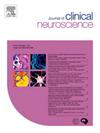Long-term course of gastrostomy nutritional management in patients with Duchenne muscular dystrophy: A retrospective cohort study
IF 1.9
4区 医学
Q3 CLINICAL NEUROLOGY
引用次数: 0
Abstract
Duchenne muscular dystrophy (DMD) is a progressive neuromuscular disease that commonly requires gastrostomy due to dysphagia. This study aimed to investigate the proportion of patients with DMD requiring gastrostomy and to assess the timing and outcomes of gastrostomy in patients with DMD to optimize perioperative care and improve long-term management. We conducted a retrospective cohort study by reviewing the medical records of patients with DMD treated between March 1991 and November 2023 at Kobe University Hospital. To identify risk factors for gastrostomy, Fisher’s two-tailed test and logistic analysis were used to compare the gastrostomy (group G) and comparison group without gastrostomy (group C) groups. We identified patients >18 years with DMD. We excluded those without medical records from the last decade and those on nasogastric tube feeding. Among the 135 eligible patients, five (median age, 23 years) underwent percutaneous endoscopic gastrostomy (PEG; uptake rate, 3.7 %), and their data were analyzed for perioperative outcomes. Complications included ventilatory disturbances, aspiration pneumonia, and hemorrhagic shock. Two patients experienced significant postoperative complications, underscoring the high-risk nature of PEG in this population. Participants’ postoperative weight changes varied significantly. The presence or absence of ventilatory management, cardiomyopathy treatment, scoliosis, and steroid treatment were examined as risk factors between groups G and C, but no significant differences were observed. This study highlights low gastrostomy usage among patients with DMD, with varying outcomes. Meticulous planning and early consideration of gastrostomy are crucial to enhance the quality of life and nutritional outcomes in these patients.
杜兴氏肌肉萎缩症患者胃造口术营养管理的长期疗程:回顾性队列研究。
杜兴氏肌营养不良症(DMD)是一种进行性神经肌肉疾病,通常因吞咽困难而需要进行胃造瘘术。本研究旨在调查需要进行胃造口术的 DMD 患者比例,并评估 DMD 患者进行胃造口术的时机和结果,以优化围手术期护理并改善长期管理。我们通过回顾 1991 年 3 月至 2023 年 11 月期间在神户大学医院接受治疗的 DMD 患者的医疗记录,开展了一项回顾性队列研究。为了确定胃造口术的风险因素,我们采用费雪双尾检验和逻辑分析法比较了胃造口术组(G 组)和无胃造口术对比组(C 组)。我们确定了年龄大于 18 岁的 DMD 患者。我们排除了没有过去十年医疗记录的患者和使用鼻胃管喂养的患者。在 135 名符合条件的患者中,有 5 人(中位年龄为 23 岁)接受了经皮内镜胃造瘘术(PEG;接受率为 3.7%),我们对他们的数据进行了围手术期结果分析。并发症包括通气障碍、吸入性肺炎和失血性休克。两名患者出现了严重的术后并发症,凸显了 PEG 在这一人群中的高风险性。参与者的术后体重变化差异很大。作为 G 组和 C 组之间的风险因素,对是否存在通气管理、心肌病治疗、脊柱侧弯和类固醇治疗进行了研究,但未观察到明显差异。这项研究表明,DMD 患者使用胃造瘘术的比例较低,但结果却各不相同。为提高这些患者的生活质量和营养状况,精心策划和及早考虑胃造口术至关重要。
本文章由计算机程序翻译,如有差异,请以英文原文为准。
求助全文
约1分钟内获得全文
求助全文
来源期刊

Journal of Clinical Neuroscience
医学-临床神经学
CiteScore
4.50
自引率
0.00%
发文量
402
审稿时长
40 days
期刊介绍:
This International journal, Journal of Clinical Neuroscience, publishes articles on clinical neurosurgery and neurology and the related neurosciences such as neuro-pathology, neuro-radiology, neuro-ophthalmology and neuro-physiology.
The journal has a broad International perspective, and emphasises the advances occurring in Asia, the Pacific Rim region, Europe and North America. The Journal acts as a focus for publication of major clinical and laboratory research, as well as publishing solicited manuscripts on specific subjects from experts, case reports and other information of interest to clinicians working in the clinical neurosciences.
 求助内容:
求助内容: 应助结果提醒方式:
应助结果提醒方式:


